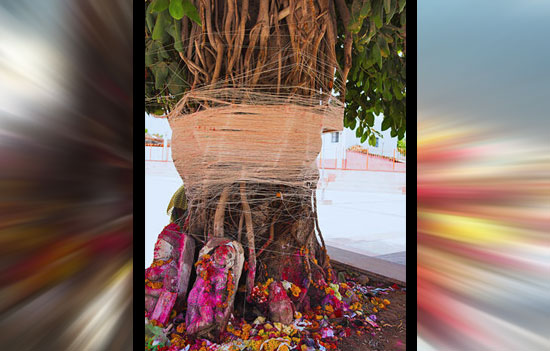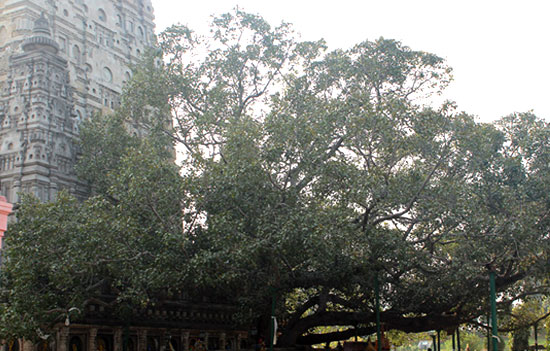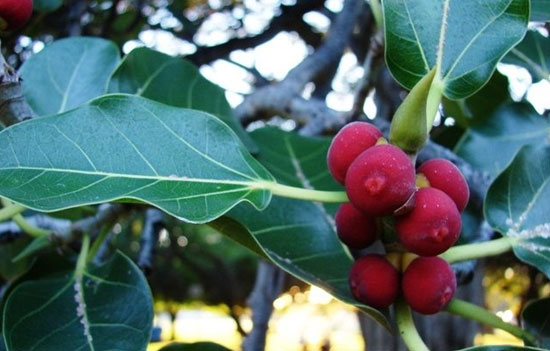- Know about India’s National Tree, the Banyan tree. Its significance, its botanical side, giving nature, cultural and spiritual importance, medical and commercial use.
This is one of my favourite trees (called Ficus benghalensis) and I truly admire
the vastness and the spiritual structure of the tree. When we hear about the
great Banyan many must be remembering hanging on its hanging roots as a child,
having meetings sitting under the tree, worshiping the tree, taking a break
under its motherly shade and many more.
This tree is not just a tree but it holds immense significance in India, it has sacred values, it has mythological stories, culture, history and many more. Talking about The Banyan Tree is going to be never complete with whatever knowledge I gather from all parameters…as it is so ancient and grounded just like its physical structure. It is one of the 750 plus species of fig trees pollinated by own species. Fig wasps breeds on this tree.
Understanding the botanical side, Banyan tree has one of the largest canopy trees in the word. It has thick and oval shaped leaves which are dark green in colour having leathery and glossy feel. It’s a fat and evergreen tree. These drought resistance trees are found in India, Nepal, Sri Lanka, Pakistan, Bangladesh, Bhutan, China and many other countries. These great trees live for 500 years making history; these old trees are found in some botanical gardens of the world especially in ancient temples of India. The biggest Banyan tree is in Andhra Pradesh covering 4.7 acres.
This sacred tree is an epiphyte which
grows on other trees and derives nutrition from air and rain water. It produces
fig fruits which shelter the fig wasps on which the trees depend upon for their
pollination. Many fruit eating birds are responsible for dispersing the tiny
seeds of fig. We have often seen a tree rooting out from buildings, temples
etc., where the birds have dropped seeds. Banyan trees produce fig fruits which
shelters so many species that disperse seeds everywhere.
And not to forget the massive network of
the roots which is a prominent feature of the tree spreading and encompassing
the area giving the tree the name Strangler Fig. These hanging roots are
aerial, thick and woody which later unite with the earth!
The massive tree is described by Lord Shri
Krishna in Bhagwat Geeta as: "There is a banyan tree which has its roots upward and its branches down, and the Vedic hymns are its leaves. One who knows this tree is the knower of the Vedas." (Chapter/Verse 15.1)
Banyan tree has various names in different languages: Sanskrit–Bahupada, Malyalam-Ala, Marathi–Vada, Bengali– Bar, Hindi–Bargad, Gujarati–Vad, Tamil- Al, Telugu-Peddamarri to name a few.
Cultural and
spiritual aspects
It is widely known as the tree of life and tree of knowledge due to its various aspects. In the state of Maharastra, Goa and Gujarat it is worshipped by women during the month of May and June especially for the wellbeing of husbands. This festival is known as “Vat Purnima”
 Vaat Purnima.
Vaat Purnima.
The spiritual name of Banyan tree is nyagrodha which means “down grower”. It’s also called as bahupada meaning having many feet. In Hindu tradition, it is called “Kalpavriskha” the tree that fulfills wishes. Bramha, Vishnu and Shiva the Trimurti resembles the
tree, Bramha the roots, Vishnu the bark and Shiva the branches.
The
British noticed the Gujarati community-Baniya siting under banyan tree which gave the
tree its common name. For Buddhist, this tree is sacred as Lord Buddha
meditated under the tree.
 Banyan Tree Bodhgaya
Banyan Tree Bodhgaya
Not to forget Lord Krishna delivered the song of “Bhagwat Geeta” below Banyan Tree.
Medical
values
The extract of the
stems have analgesic property. Fruits have potential to fight cancer. The Seeds
act as astringent and are used in dysentery. Bark is used to cure diabetes,
while the leaves are said to help cure ulcers. Leaves are also
anti-inflammatory and anti-oxidant which help lower the cholesterol levels.
The
anti-analgesic property helps reducing pain related to arthritis. The roots are
useful to reduce liver inflammation. Besides the above, diseases like oral
disorders, rheumatism, asthma, nausea, toothache, digestive issues, skin
disorders to name a few are also cured. To add on, the leaves are considered as
mosquito repellant.

Commercial
uses
The leaves of
Banyan are used to make plates and as it has 9.63% crude protein they are
useful for fodder too. In some parts of India, a traditional drink is made from
the fruits. The timber can used for furniture and paper making. The aerial
roots rare strong and hence used in cart and tent making.
Banyan tree are
said to hold water and hence are also planted for conservation
purposes. You will see many a times a well and a Banyan tree together. It also
purifies air improving the air quality thus reducing pollution due to its vast
foliage.
Wrapping up the
essay Banyan tree is also believed to be as male tree and hence its planted
with Peepal tree. After reading auspicious notes of this revered tree it was
difficult to accept this that in some parts of India Banyan tree is not
included in marriages or births as it does not allow any tree or grass blades
to grow beneath it.
Also read About
Peepal Tree , Sacred
Trees of the Hindus
To read all
articles by author
References
1. Majesty and Mystery of India’s sacred banyan trees
2. Significance
of Banyan Tree
3. All
you need to know about banyan trees
4. Banyan Tree Root System
5. https://www.pattayaunlimited.com/sacred-banyan-tree-in-jomtien/
6. https://www.1mg.com/ayurveda/banyan-217
7. https://hort.purdue.edu/newcrop/CropFactSheets/ficus.html
8. www. myupchar.com
9. Health
benefits of Banyan Tree Fruit
10. www.ecoidia.com